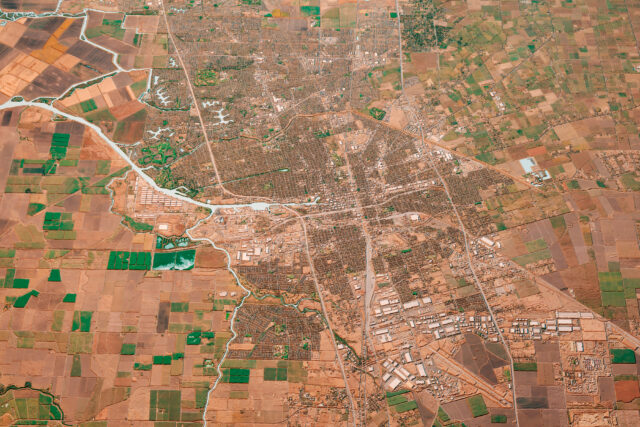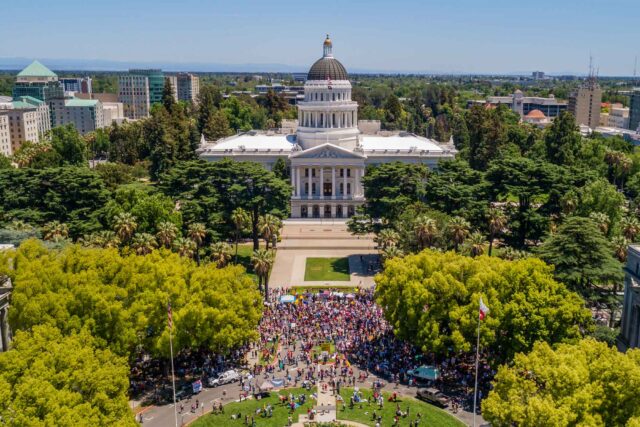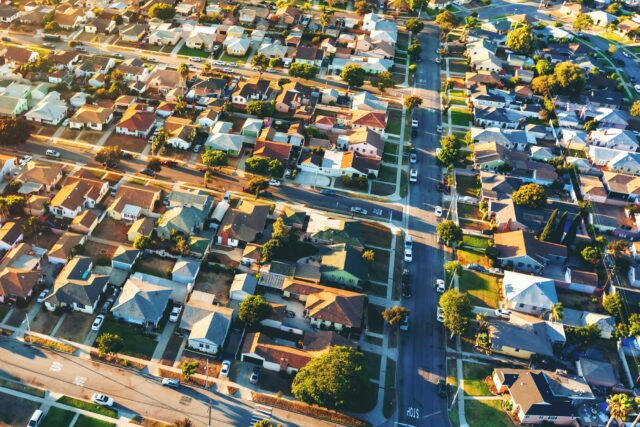California’s population has grown more diverse over the last 50 years, with particularly strong growth among Latino and Asian American populations. This growth has potential consequences for the political districts currently being drawn by California’s Citizens Redistricting Commission (CRC). The CRC has a clear mandate to support representation for communities of color where they are geographically concentrated and share political interests. How well do current districts represent these communities, and what does this mean for the new districts being drawn?
The law does not mandate proportional representation for communities of color, but proportionality is a useful baseline for comparison. And against that benchmark, the current districts—drawn in 2011—were an improvement but still fell far short. At the time, California’s voting-eligible population was 23% Latino, 12% Asian American, and 7% African American. But among the 173 final districts—including congressional, state senate, and state assembly districts—just 15% were majority Latino, only one was majority Asian American, and no districts were majority African American. A few districts had a substantial plurality (40% or more) of each group—two each for African Americans and Asian Americans, and nine for Latinos.
Ten years later, the same districts are no closer to proportionality. Latinos are now 30% of the voting-eligible population statewide but a majority in just 19% of districts. Asian Americans are almost 15% of the population but still a majority in just one district out of 173. Meanwhile, the African American share of the statewide population has declined only slightly and there is still no district that is majority African American. Moreover, African Americans no longer exceed 40% of the population in any district (though they account for at least 30% in two).
The maps below give a sense of the situation using congressional districts (you can also visit our similar maps for the state senate and state assembly). Ten out of the 53 congressional districts are majority Latino, and three more are very close to a Latino majority. No congressional district has an Asian American majority, although District 17 encompassing parts of Santa Clara and Alameda Counties in the Bay Area is close, and six others are over 30% Asian American. No more than 29% of any congressional district is African American.
These maps do not tell us exactly how many state legislative and congressional districts with majority populations of color can be drawn now, but they do hint at what is possible. Latinos are over 60% of the population in 13 districts, compared to just one in 2011. It may be possible to retain Latino majorities in these districts while redrawing lines in a way that also shores up Latino populations in neighboring seats. Likewise, Asian Americans are now more than 45% of the population in three districts; redrawing lines to include some residents from neighboring areas could help make Asian Americans a majority in each of those three.
Achieving proportional representation for African Americans is more difficult. Their numbers are dispersed enough to make districts with even a substantial plurality challenging. But difficult does not necessarily mean impossible, and California’s redistricting law contains important provisions to encourage such districts where they can be made.
When the final lines are drawn, there will almost certainly be more districts with substantial populations of color than there are now to reflect the state’s growing diversity. PPIC will continue to monitor the redistricting process as it unfolds in the coming months.
Topics
Census elections Political Landscape political representation Population redistrictingLearn More

Racial Representation and Partisan Leanings in California’s Final Redistricting Maps

Redistricting and the Changing Demographics of the California Legislature





